Sometimes it just takes a small spark to ignite a fire within you.
For Anna Mika, who started as a geology major her freshman year and switched to anthropology the following year, that spark came in 2017 while taking an Anthropology course called North America’s Ice Aged Hunters, taught by Metin I. Eren, Ph.D., associate professor and director of archaeology in the College of Arts & Sciences at Kent State University. She said that course changed her perspective on everything.
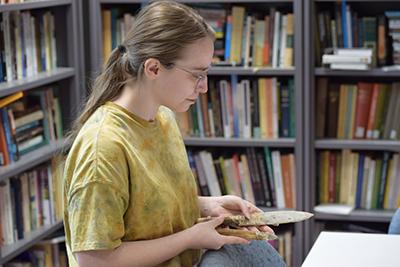
At the time, Mika probably couldn’t have imagined that spark leading her to being named one of just 25 Harding Distinguished Postgraduate Scholars who will attend the University of Cambridge (UK) on a full ride scholarship thanks to a very successful academic and research career at Kent State where she earned her B.S. (2019) and M.A. (2022) degrees. Not bad for a quiet kid from Parma, Ohio.
“The Harding program was established in February 2019 thanks to an extraordinarily generous donation from the David and Claudia Harding Foundation, the biggest single gift made to a university in the UK by a British philanthropist,” the University of Cambridge web site states.
“The thing about Anna is this person shows up in my class who I’ve never seen before,” Eren said. “By the end of the semester there was just one person who had an over 100 percent grade in the class, and it was this quiet student who didn’t say a lot during the semester, just because she is quiet by nature. I’m thinking…who is this? This person needs to join the lab! So, it was fortuitous.”
Mika is just one of five success stories that the Experimental Archaeology lab group, led by Eren and Assistant Professor Michelle Bebber, Ph.D., shared recently. Ashley Rutkoski, a Groveport, Ohio native, earned her M.A. in 2019 and will attend the University of Florida and pursue a doctorate. Burlington, Connecticut native Dan Wilcox earned his M.A. and will attend the University of Albany and pursue a doctorate. Honors Student Nicholas Gala, a Geneva, Ohio native, earned his B.S. and will pursue a master’s degree at the University of Tulsa. Grace Conrad, a Medina, Ohio native who also graduated with Honors, earned her B.S. and will pursue a Ph.D. at the Ohio State University.
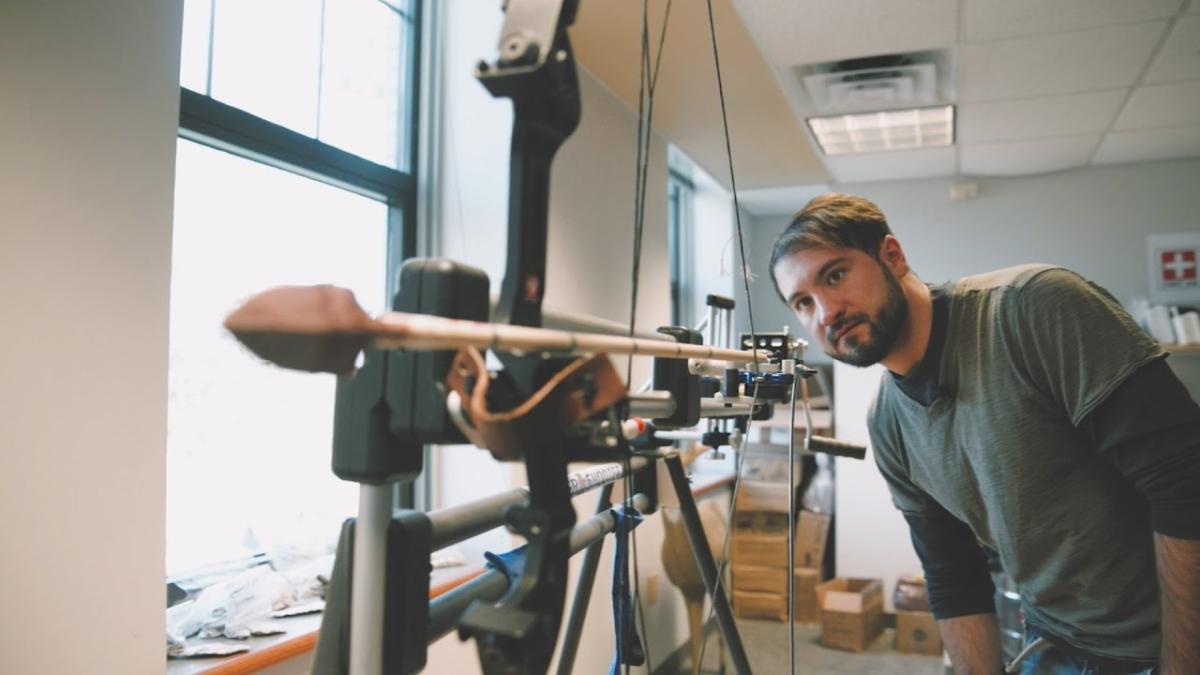
“We’ve had a banner year,” Eren said. “I don’t think we’re ever going to have another year where we have five people get full rides to top graduate programs. That’s a testament to just how special this group of hard-working and brilliant students are and all of Kent State should be proud of these archaeology students.”
“Not only are they all successful, but they did it during the worst time to be in college ever (during the Covid pandemic),” Eren said. “They all essentially lost a full year in the lab. Despite that, we haven’t had as many students publish as much. So, that is just a testament to how much they’ve worked outside the lab to pursue their dreams, so their success is their own.”
Anna Mika
When Mika first joined the lab group she measured artifacts, conducting morphometrics, and it translated into a study on Madison and Levanna small stone points for arrowheads commonly flint knapped and used during the Woodland period (600 – 1600 A.D.). These points became one of her favorite topics to study.
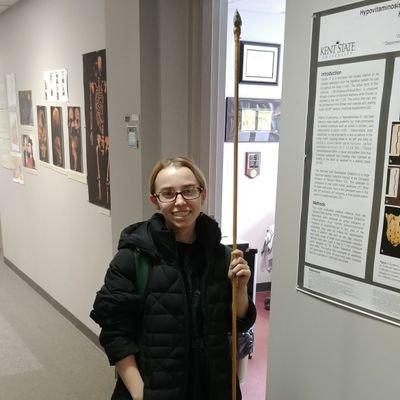
“We ended up doing a comparative study between the archaeological artifacts that we had housed here with the experimental work that Dr. Bebber had done,” Mika said. “We found that the point sizes were decreasing in conjunction with the increase in warfare and hunting. As people were coming into a larger population size this created a lot more stress, which led to warfare, but there was also hunting going on at the same time, so those combinations resulted in small-sized points.”
Based off that idea, she wanted to understand the human biological and anatomical sides of it too, determining if the ribs were a factor. It begged the question: What is it about small-sized points that is functional?
“Small sizes penetrate deeper into the prey versus larger sizes that cause bigger wound damage, but don’t go as deep,” Mika said.
“So, the fact that Anna found that these points are getting smaller at the same time as warfare and hunting is increasing shows that people were really keen on killing whatever they were shooting,” Eren said. “It needed to be more lethal.”
“I don’t know how to stop when it comes to any type of research,” Mika said. “It’s just fascinating to me. I just want to do everything.”
Mika then dove into other topics in the lab, including ceramics and limestone and grit temper pottery.
“I was working in the lab and doing different projects and it was just a lot of fun getting to work with all these people in different fields and specialties,” Mika said.
Mika also experienced working on both surface surveys and excavations with the Experimental Archaeology lab group at sites including Berlin Lake, Jackson Farm, and Paleo Crossing near Medina. For her master’s thesis, she experimented with and studied the functional capabilities of Clovis (prehistoric Paleoamerican) knives in terms of cutting efficiency.
At the University of Cambridge, Mika will continue to pursue her dream of working with experts in the field on all sorts of new, fascinating projects. One of those experts is Cambridge Assistant Professor Alastair Key, Ph.D., (Paleolithic Archaeology) who was a visiting researcher at Kent State a few years ago.
“I’m actually going to be using some of that knowledge as a basis for some of my Ph.D. dissertation,” Mika said. “I’m going to be looking at the cutting efficiencies, ergonomics, and a little bit of the computer modeling when it comes to different flake (stone fragments) technologies, so I just keep getting so giddy about it. Experimental archaeology is where I want to be. There are very few opportunities in the world that would grant me that type of experience, so I’m very happy with both Kent State and now going on to Cambridge that I’ll get to continue that work.”
Ashley Rutkoski
Another one of Dr. Eren’s most accomplished graduate student alums, Ashley Rutkoski, graduated in 2019 and will start her Ph.D. program, with a National Science Foundation Grant-funded research assistantship, at the University of Florida this August.
She initially found her spark for archaeology at a young age, becoming interested in Classical Studies (Egypt, Greek and Roman Archaeology) and got to try it out during a career day in middle school while shadowing an archaeologist that worked in the Cultural Resource Management (CRM) field. She was hooked.
After earning her undergraduate degree from the University of Akron, the Groveport, Ohio native enrolled in the M.A. in Anthropology program at Kent State and joined its Experimental Archaeology Lab.
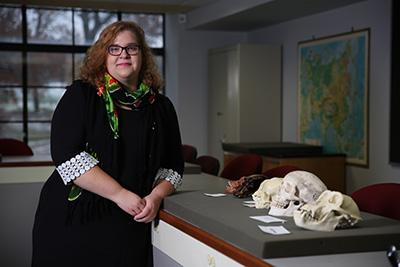
“I was interested in going to Kent State because of its focus on using experimental techniques to explore archaeological questions, which most schools don’t incorporate into their curriculum,” Rutkoski said.
Always drawn to both art and science, she wanted to find a way to incorporate her ceramic background while also doing scientific research exploring ceramic technology from Late Woodland and Late Precontact Societies in the Midwest.
“This lab was a really good fit for me,” Rutkoski said. “I love all the students and professors I worked with. I was able to be involved in a lot of projects and gain a ton of experience developing and conducting my own research projects.”
She worked on some of the same projects, surveys and excavations as Mika, and conducted some of her own unique experiments and statistical techniques to try to answer some of archaeology’s oldest questions using material science approaches. She also focused on the invention and adoption of material culture, factors that drive changes in ceramic technology, and microwear analysis.
“After stone tools, ceramic sherds (fragments of destroyed clay pots) are one of the most abundant things we find in the archaeological record,” Eren said.
After participating in a project where she looked at sherds that were recovered from rock shelters in southwest Ohio, she explored the mechanism (invention or diffusion) that led to the emergence of limestone-tempered ceramics in the Late Woodland period.
“By using a simple chemical reaction to document the presence or absence of limestone in early grit-tempered (Early Woodland) sherds, I was able to detect small traces within these early sherds at sites that later adopted limestone temper during the Late Woodland period, but not at sites that continued to use grit temper,” Rutkoski said. “The presence of limestone in these early grit-tempered sherds suggested that experimentation and independent invention led to the adoption of limestone temper in southwest Ohio and not diffusion.”
For her thesis research, she developed a unique experiment to explore sources of variation that impact sherd morphology. It took months to produce. Using raw clay and adding temper, she began crafting 30 identical pots based on a historical design. She wanted to see whether they can simply tell the difference between the 15 pots that were filled with corn when they break, versus the 15 empty ones.
“She then broke every single one over the course of two days,” Eren said.
“It’s going beyond typology and trying to gain more information about prehistoric human behavior, like how pots were discarded and end up in the archaeological record in the first place,” said Rutkoski.
"Ash is unique," Eren said. "She‘s kind, she‘s caring, she‘s conscientious. These are all things you not only want in a student, but in a colleague. She has a bright future ahead of her.”
For her doctoral work at the University of Florida, Rutkoski will explore Mississippian ceramic assemblages while working in the Florida Natural History Museum.
“I am excited to learn about other Late precontact societies located in the Southeast,” Rutkoski said. “I want to explore the development of these groups in the Southeast and compare it to those that thrived in the Midwest.”
Dan Wilcox
For Wilcox, the spark came when he first learned of ancient soapstone pottery, which was commonly used over 3,000 years ago. When he joined the Experimental Archaeology Lab at Kent State, he began working with Dr. Bebber, an expert on early ceramic technology. He began chiseling out, experimenting on, and cooking syrup and sugar with 20 heavy (~18 lbs) soapstone bowls and comparing them to other early forms of pottery that would have been available at the time.
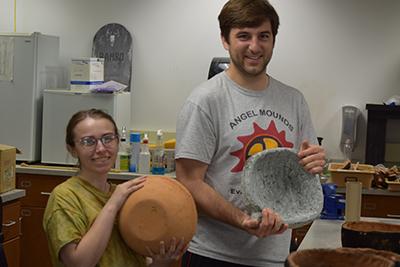
“If you want to boil something, early pottery wasn’t going to do it for you, so soapstone vessels were a lot better at retaining heat and allowing stuff to boil,” Wilcox said.
Bebber helped him get a better understanding of thermal retention and expansion of ceramic bodies and how they could apply that and do a physical test with cooking and compared the different materials for his thesis work.
“It made me realize that understanding the evolution of cooking technology is something I’d like to continue to focus on and it’s something I’m really passionate about,” Wilcox said.
The Institute for American Indian Studies posted a Facebook video featuring Wilcox and his soapstone work in 2021.
After earning his undergraduate degree from the College of Wooster, Wilcox, a Burlington, Connecticut native, worked for some museums and did some archaeology excavation, geochemical sourcing, and cultural resource management (CRM) projects in the field before graduate school.
When he joined the experimental archaeology lab at Kent, Wilcox conducted a durability study, testing how different-sized projectiles were affected after being shot repeatedly and how well they withstood each test. After each shot, he evaluated whether it was just the hafting materials (that help the point stay attach to the shaft) that broke or the stone point.
“I feel that I was really lucky to get to come here to this lab at Kent State, because I got to work on so many different projects,” Wilcox said. “It always felt like as long as you had your idea, you were given the opportunity to plan it out and follow through with it.
While pursuing his Ph.D. at the University of Albany, Wilcox plans to work with Assistant Professor of Anthropology Christopher Wolff, Ph.D., who studies prehistoric coastal people and their ecosystems.
“Dr. Wolff has a lot of interesting ideas involving testing the properties of soaps for oil lamps and how well they would heat structures of groups from the Eastern Subarctic/Arctic areas of North America. He wants to recreate a Dorset Paleoeskimo structure for a research project, so I might be involved in helping him build this circular structure that is partially dug into the ground.” (Dr. Eren and his lab group members joked that this would be Wilcox’s first apartment in Albany).
Wilcox said this would be an opportunity to expand his knowledge by looking at a new geographic area, environment, and the subsistence practices that might influence the materials that people used to cook with 3,000 years ago in that region.
“I’m not only interested in what they were trying to cook, but also to see what materials and shapes of vessels they used to try to get a better idea of the emergence of cooking technologies,” Wilcox said.
Wilcox said his goal and dream is to be able to work at an institution that allows him to pass on what he’s learned to students, continue with his research projects, and contribute to the scientific community as a whole.
Nicholas Gala
Though he had already taken the Intro to Cultural Anthropology (at the Kent State Ashtabula campus) and the Intro to Archaeology courses, Gala, a Geneva, Ohio native, wasn’t sure what he wanted to do when he first came to Kent State. Then, he met Dr. Eren and the fire was lit.
Gala persistently visited Eren’s office to discuss joining his lab, starting an honors thesis, and then took his class, North America’s Ice Age Hunters, which is a study of the Clovis people. He loved it. Once in the lab, he started a project measuring 60 stone points of varying lengths made of obsidian and flint. They ended up testing them on the Instron testing machine which performs tensile, compression, bend, and other mechanical tests on materials.
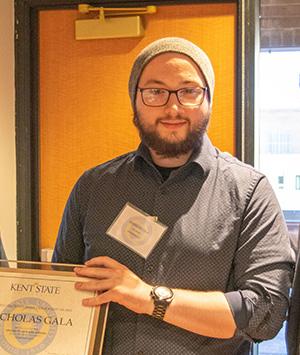
During his time at Kent State, Gala led three vastly different research projects. He also got to shoot arrowheads with a bow in the lab which he said was “a lot of fun”. He also worked on archaeological excavations at the Heckleman Site and the Stow Rock Shelter. He recently received a Distinguished Student Award from the College of Arts and Sciences and was a first author of a peer-reviewed research article published in the journal Archaeometry. For his senior honors thesis he took a survey of modern flintknappers and wanted to document their injuries.
“People like to say ‘you are going to cut yourself while learning to flint knap and even while you are a prominent flintknapper’, so we wanted to know how dangerous it actually is,” Gala said. “What is the actual frequency of injuries? What are the most severe injuries that people have? How can we relate that to past people?”
He reported that flintknappers usually sustain a minor injury almost every time they do it. However, most of the time, the cuts bleed for a little bit, but they heal up quickly and cleanly. He has started to flint knap himself and says he’s “still not quite good enough but has only had a few minor cuts.”
When asked ‘What was the most severe injury reported by other flintknappers?’, Gala said: “Some people have run a flake across their bone like a wood planer. Somebody has cut down into the periosteum of the bone. Somebody had to have a tourniquet after piercing their ankle with a flake. It’s crazy.”
“So, imagine that danger, but you’re Homo Erectus (~200,000 years ago),” Eren said. “There are no band aids and no antibiotics, so it would have been a dangerous thing. The fact that Nick explored that is great. I think in some ways early flintknappers may have understood the danger, but if they need to process that carcass to eat, they are going to die one way or another, so at least you’ll risk flintknapping knowing that you can eat this meat, right?”
“Nick is mature beyond his years in several ways, including his awesome intellectual capability; his deep passion for archaeology; his advanced maturity in terms of his work ethic; and in terms of his deep respect and decency for his fellow lab members,” Eren said. “As an undergraduate, he possessed the leadership and commitment of a Ph.D. candidate.”
While attending the University of Tulsa Gala plans to work on lithic technology with Associate Professor of Anthropology Briggs Buchanan, Ph.D., who Eren says is brilliant and arguably the world’s premiere archaeological statistician.
Gala received two fellowships to the University of Tulsa to continue his graduate education entirely for free with no TA or RA responsibility.
“So, essentially, Tulsa is paying Nick for the next couple years to think deep thoughts,” Eren said.
Grace Conrad
Archaeology sparked Conrad’s interest at an early age. At only 15-years-old, the Medina (Ohio) area native began volunteering at a variety of dig sites led by Brian Redmond, Ph.D., curator of archaeology for the Cleveland Museum of Natural History (CMNH). Several years later, her familiarity with those dig sites helped her land an internship with him while a student at Kent State.
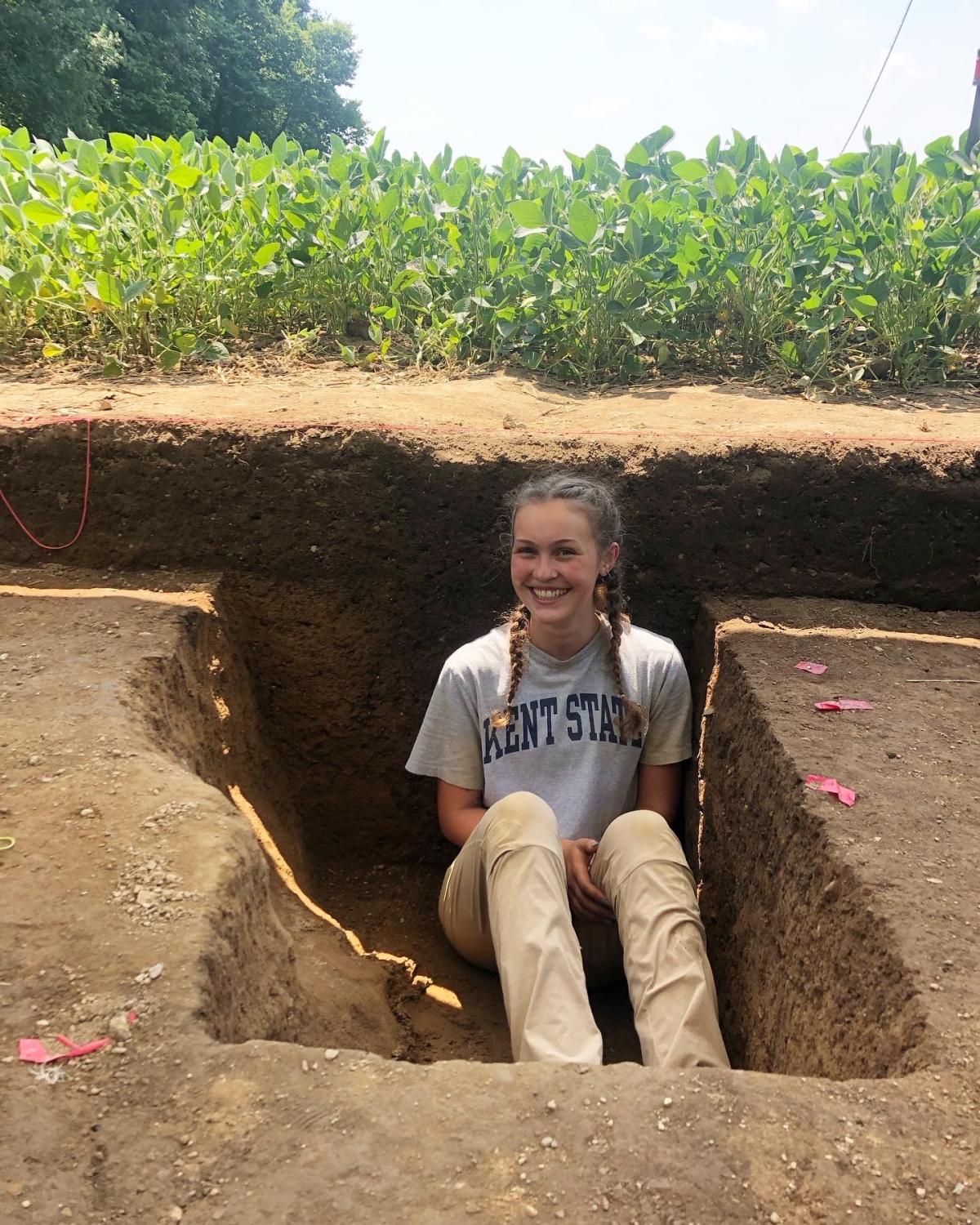
After visiting Kent State, while still in high school, she met Dr. Eren for the first time and he gave her a tour of his lab. He was impressed with her knowledge and asked her to come to Kent once a week during her final year of high school and assist some of his graduate students with their thesis projects to see if it was something that she would like. She helped Ashley Rutkoski with processing raw clay so she could make pots for an experiment. After that, Conrad was hooked.
“I loved it!” Conrad said. “I have always been interested in archaeology, but this field of experimental archaeology was something really exciting to me because it seemed like the opportunities were endless. I really got a taste for all of it. I even tried some flint knapping. When I went to do my own research, that was a really good base to have at a young age. So, I’m super grateful for that early time.”
“You can really get creative in this lab,” Conrad said. “There is so much to do, and you can work on whatever your heart desires, as long as you come up with a question. Metin and Michelle were great at guiding me and my lab mates and taking those questions and working with us to design our own experiment and having the resources to see that through. The culture in the lab was great and we all get a long really well.”
But, as many experienced, there were setbacks when the Covid-19 pandemic hit.
“Unfortunately, Covid happened, so I wasn’t able to work on as many projects as we had planned, but I still think it was a significant amount,” Conrad said. “I wanted to focus on Clovis bone technology, and Metin had a project that he had been wanting to do on this topic.”
Conrad began making points made out of bones that would have been similar to the Clovis technology. Eren had a collection of casts to use as a reference and she bought quite a few cow femurs from a local butchery and turned them into projectile points to study.
“We were starting to figure out how we were going to do it. And then, the pandemic hit and so we had to pump the brakes.”
When the pandemic hit, she also had an internship lined up for the semester which was unfortunately canceled.
“I was really concerned because I wanted to do something in my field,” Conrad said. “So, I was talking to Metin and he said ‘we’ll figure out how to do a remote project’. I thought it was cool that he was able to figure out how I could still be productive from home and not have to be in the lab. She participated in Kent State’s Student Undergraduate Research Experience (SURE) and measured pictures of points using Adobe software. For this work, she placed first in her category (Anthropology, Geology and Geography) for the SURE program’s Three Minute Thesis Competition.
Luckily, in the summer of 2021, she got to do the internship through the CMNH that was canceled the prior year. She worked as a Cleveland Archaeological Society intern and research assistant at the Cleveland Museum of Natural History, working at the Heckelman site on a project directed by Redmond.
“It was kind of a fun, full-circle moment because I got to be all in even though I had already been volunteering there for years,” Conrad said. “So, it was six weeks in the field, five days a week, and just a full excavation of a multi-occupational site, so that was really cool.”
Museum archaeologists spent five field seasons investigating the artifact-rich Heckelman site in Erie County, Ohio. In conjunction with archaeologists from the University of Toledo and the Firelands Archaeological Research Center in Amherst, field survey and excavations uncovered the remains of a ceremonial center dating to 300 B.C., a small Hopewellian hamlet occupied around A.D. 200, a small Late Woodland village from about A.D. 600, and a stockaded Late Prehistoric settlement occupied at A.D. 1400.
Conrad is now enrolled in the Ph.D. program in Anthropology at the Ohio State University and is already serving as a field supervisor this summer at an Ohio State site, in Anderson Township, near Cincinnati.
“We’re at a site called Turpin, which is a Fort Ancient site, so we’re looking in two different villages, looking at their houses, and some of the central plaza,” Conrad said. “I’m super interested in Ohio archaeology broadly, but the shift from foraging to farming subsistence patterns in the Ohio Valley is very interesting to me as well. The tools these people were using changed based on how they were getting their food around 1300 AD. The site that we’re working on right now is sort of on the cusp of agriculture.”
When asked about advice to future students, Conrad said: “Start early. Don’t be afraid to talk to your professors if you have any interest, whether it is in the archaeology lab or labs in any other department. Faculty, at least at Kent State, are more than happy to have undergrad students come in, even if they are not running their own projects, just to see what lab work looks like. So, seek out those opportunities early. I had opportunities that I never thought were available to me until Metin and Michelle showed me what I am capable of.”
Kent State is ranked as an R1 research institution by the Carnegie Classification of Institutions of Higher Education, which is the highest recognition that doctoral universities can receive, affirming Kent State’s place as an elite research institution along with Yale, Harvard and the University of California-Berkeley.
Read more about Kent State University’s Experimental Archaeology Lab and Department of Anthropology
# # #
Media Contacts:
Jim Maxwell, jmaxwel2@kent.edu, 330-672-8028
Dr. Metin I. Eren, meren@kent.edu, 330-672-4363





